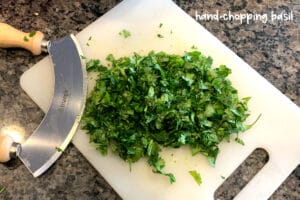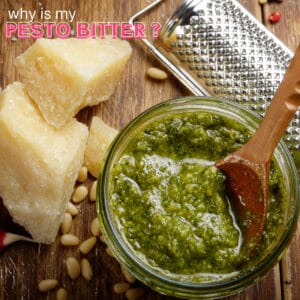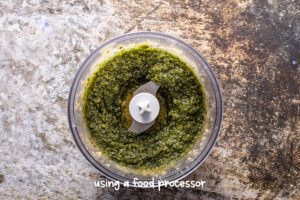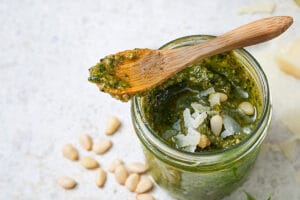When searching for answers to why is my Pesto bitter, I found various options. Among these are using old EVOO, aging pine nuts, not using a mortar and pestle, taking advantage of a food processor, and the bolted basil.
The frustration of a wrongly prepared recipe or another issue is unmatched. Through a simple Google search, you might find the answer. However, most solutions on the internet are not always helpful. At the end of the day, you have to figure out how to solve the problem.
Having experimented for some time, I have finally succeeded in creating a recipe to mitigate the bitterness of my Pesto. Whether looking for a quick fix or a longer-term solution, look no further! Bitter Pesto is no longer a burden! Read on to find out how!
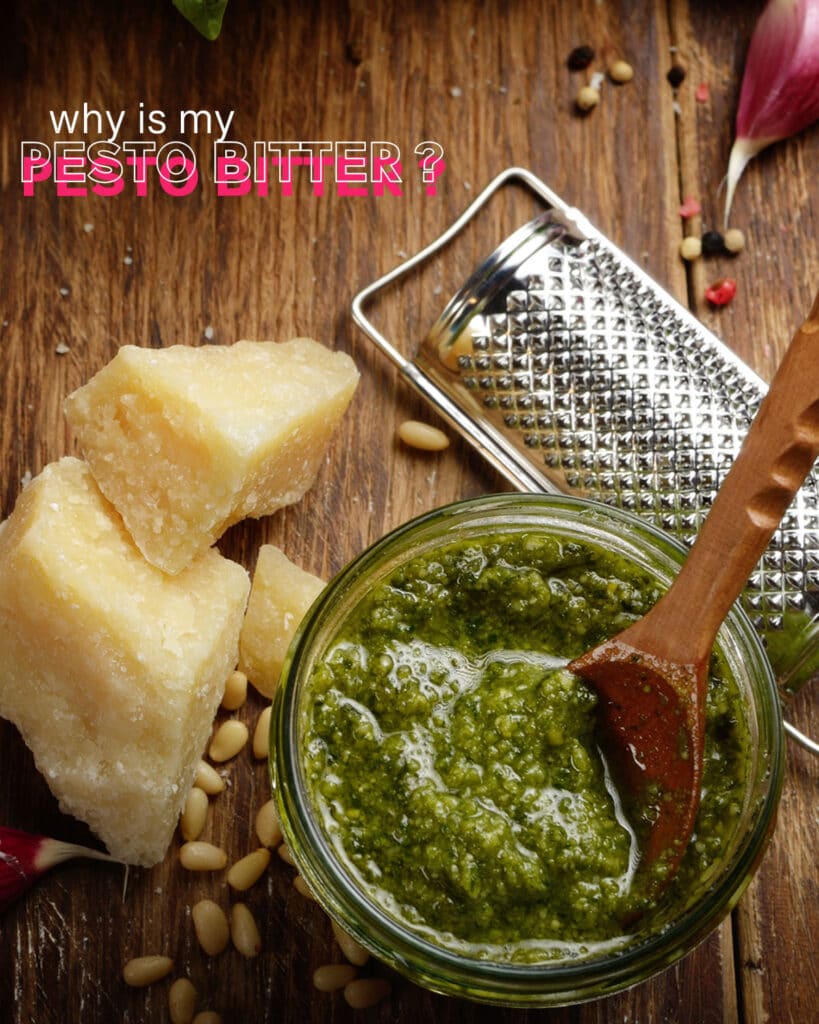
How do you make your own Pesto?
A food processor is often used to make Pesto. For one thing, I make mine in the same way. It's usually something I do twice a month. Recent events have led me to realize that I've been doing it wrong every step.
Since I am a fan of Pesto, I assume it's made with extra virgin olive oil. Under most circumstances, that's what you'd expect. Besides making Pesto with this product, you can also use it to make dips, including hummus.
When making Pesto from scratch, there is always a hint of bitterness. It was just hard for me to tell where it came from and why.
My research revealed that extra virgin olive oil is susceptible to mechanical manipulation. A blender and a food processor are two appliances that utilize this form of agitation.
Why is extra virgin olive sensitive to agitation?
Why does this happen? This is a new concept to me, and I assume you don't realize it either. There is a small amount of technical information here, but it is crucial to know.
The molecular-based compounds found in olive oil known as polyphenols are reputed to be highly beneficial for health. Many studies have concluded that they contain cancer-fighting agents and the capability even to prevent cancer development.
The olive oil that we use in our recipes includes a very high number of polyphenols. Each of the polyphenols in olive oil is coated with various fatty acids. These acids serve as a protective agent to keep the molecules solid.
Suppose you utilize a mechanical agitation appliance for the purpose and intent of creating an emulsion. In that case, the protective fatty acid sheath breaks down. This results in your homemade product, like Pesto, tasting bitter.
What an interesting phenomenon! In the end, you have something promising ruining itself, thanks to bitterness. Obviously, some of us have more weird taste buds than others.
Still, it is not at all difficult to taste that distinguishable bitterness. While many theories abound on the internet, this is the only factual explanation behind all that bitterness.
Read: Shelf Life of Sauces and Condiments
Why is my Pesto bitter?
Your Pesto is likely bitter due to excessive processing in the food processor. If olive oil undergoes mechanical agitation, the protective fatty acid layer in the polyphenols is broken, and the bitter-filled insides emerge into the Pesto.
Additionally, too much processing can break down the basil, which results in bitterness. Both of these ingredients may contribute to the bitter taste.
How did I fix my bitter Pesto?
The term pesto literally means "to crush." In traditional methods, a mortar and pestle are used to prepare the Pesto. These ingredients – garlic, basil, parmesan cheese, and pine nuts – all get crushed together. Together, these components form a coarse paste-like substance. Afterward, to finish, you added the olive oil to the mixture.
It is undeniable that the traditional mortar and pestle method is the best way to go as it results in the best-tasting Pesto. The only drawback is that it is significantly more time-consuming than a mechanical agitation appliance. That is my personal opinion as well.
With a bit of self-experimentation over the past month, I came up with a pesto that tastes delicious, and you will love it! When coupled with my understanding of olive oil and how our appliances contribute to a bitter taste, my technique – which is quick and easy – works well.
Step by Step Instructions:
Step 1
Pesto is easiest to make when using a food processor. However, this does not mean you should simply dump everything in and mix everything. As a result, this approach yields oily paste-like concrete.
The better alternative is:
Chopper-knife in hand like mezzaluna is perfect for this job, and roughly chop the basil, garlic, and nut ingredients. You will only need the food processor to mix it all. Simple as that! Be gentle, and don't overwork it.
But wait...
Should I chop by hand or blend?
If you're serious about preparing a good pesto, it's best to chop it by hand. Use a sharp mezzaluna (ideally large single-bladed) or a well-made knife for this job. A sharp knife is crucial to avoid bruising or tearing the basil leaves. Whenever you chop basil, make sure the edges are sharp. Otherwise, it will discolor.
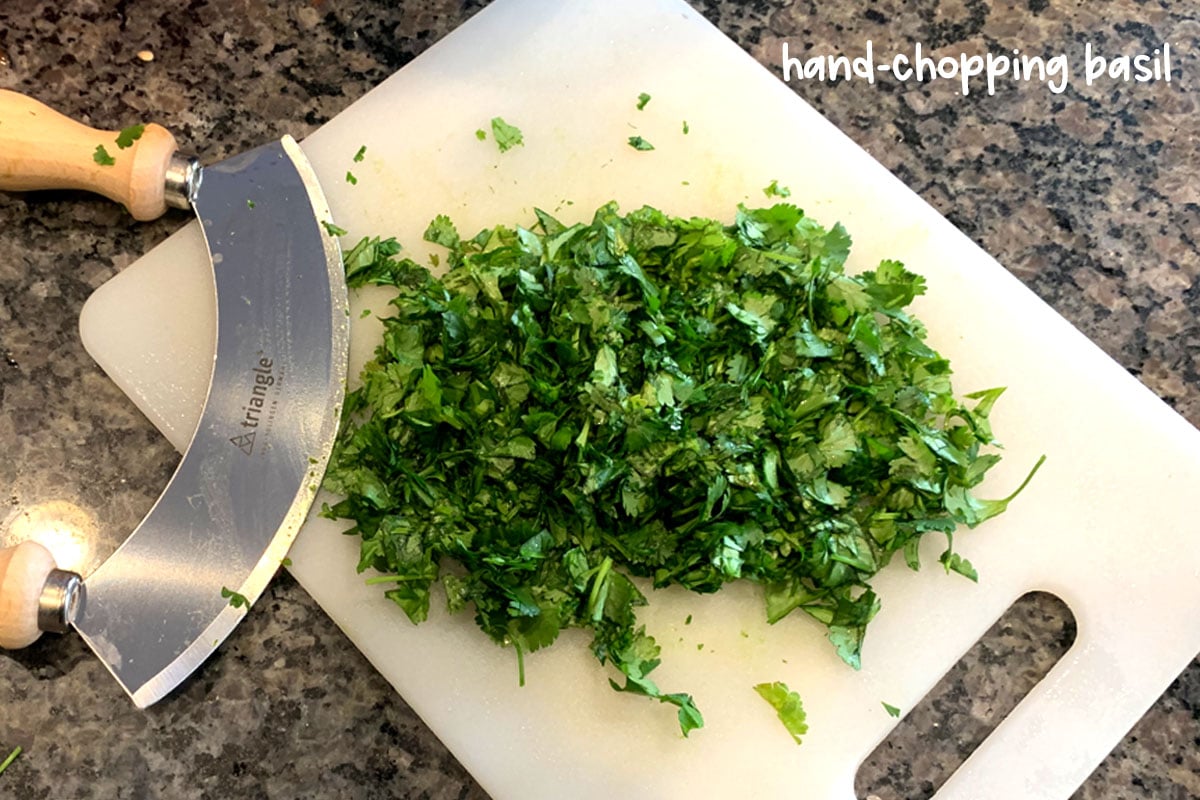
Using the traditional method (this is optional):
Preparing the herbs usually takes about 15 to 20 minutes. After chopping the ingredients, transfer them to a bowl and gradually add the olive oil (1 tablespoon at a time), sprinkle some salt. Combine the ingredients gently until they are well blended. And finally, add the finely grated cheese and fold it in thoroughly. Give it a taste. Drizzle another tablespoon of oil on top, and then seal it up.
If you decide to go the traditional route, this is the last step. You need to spoon the Pesto into a glass jar and refrigerate. Once refrigerated, Pesto lasts for 7 days.
Note:
If you intend to process the product in a food processor, continue with Step 2.
Why is this step necessary?
The leaves of the basil plant are somewhat delicate. As a consequence, they tend to bruise easily. Also, nuts release oils with crushing.
Because of these factors, the mixture will resemble the consistency of nut butter when mixed. We want to turn the ingredients into a chunky, flavorful sauce. For this reason, roughly chopping the basil leaves in advance will reduce over-processing.
Step 2
After roughly chopping the ingredients, transfer them to the food processor. Sprinkle a little salt over the top. Add 2 tablespoon of canola oil or avocado oil to the processor. Leave out the cheese for now.
Step 3
Use the pulse setting to chop all the ingredients in the food processor finely. The goal is to avoid the paste consistency; instead, pulse until the mixture is chunky bits. Be careful not to overprocess the components.
When pulsing continues, periodically turn the mixer off, open the lid, and push down the larger-sized basil leaves and any loose nuts that adhere to the sides with a spatula.
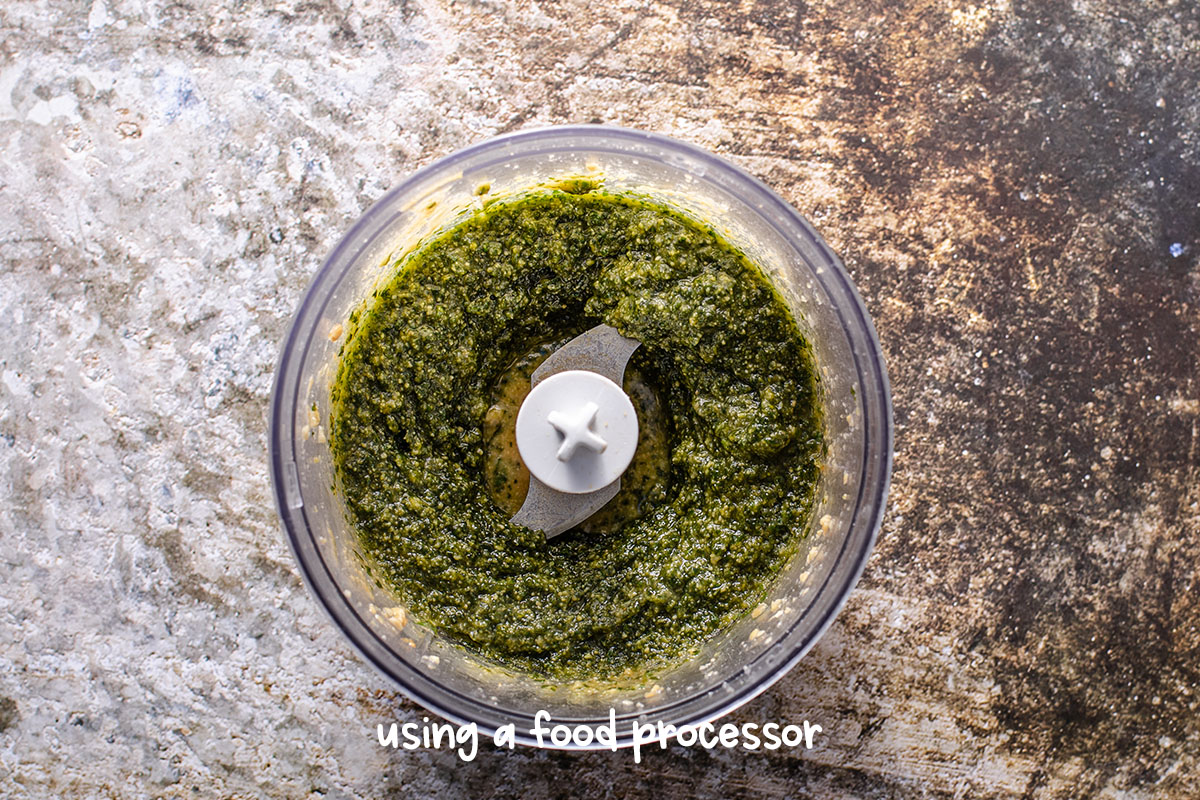
Step 4
Scrape it into a bowl when it reaches the right consistency. Next, drizzle the extra virgin olive oil of your choice, just one tablespoon at a time. Stir it gently, and ensure the oil is distributed evenly. Keep adding oil gradually until you reach the desired consistency.
Step 5:
The cheese is next. Using a box grater, use the fine edge or a Microplane and stir the finely grated cheese together by hand.
The Romano cheese will soak up some of the excess oil released. You'll have a runny result, but it's fine as long as the cheese fixes the bitterness.
By adding finely grated cheese, you add a rich, savory note to the Pesto and allow it to retain its flavors. It also helps keep the dish fresh. Best of all, it helps to offset that bitter taste successfully.
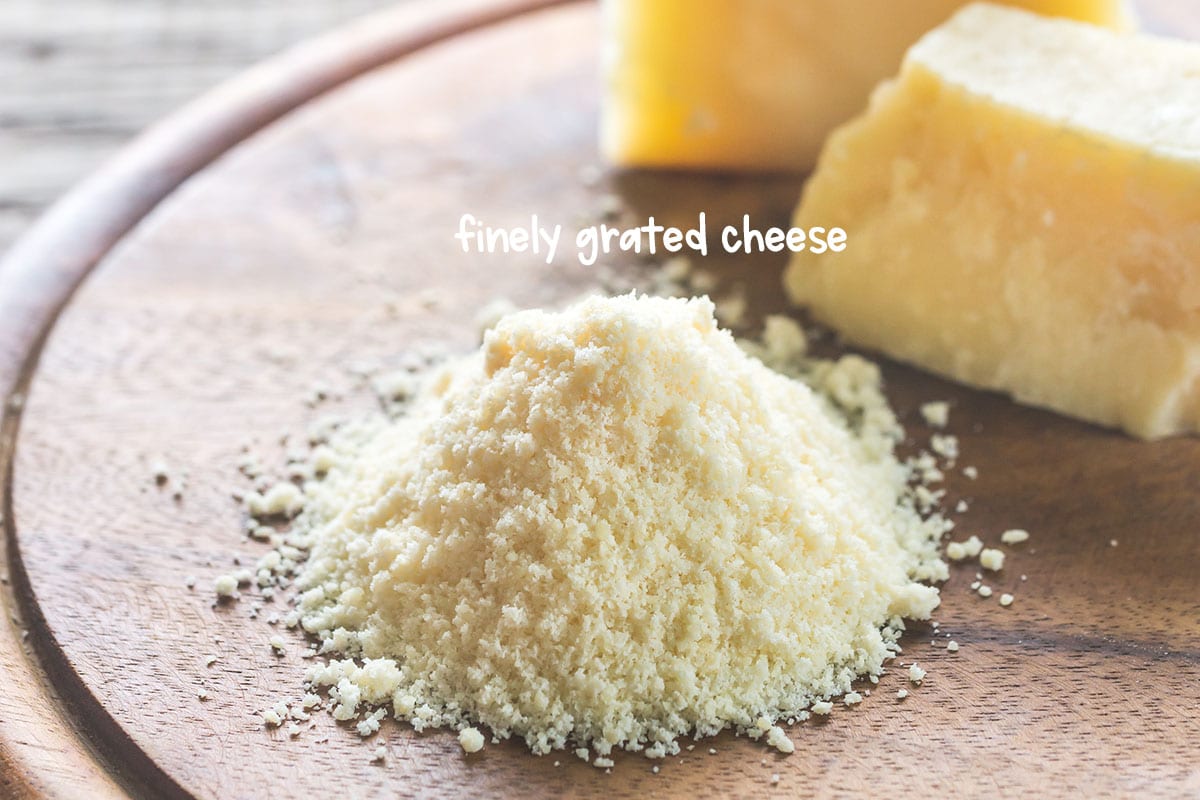
Step 6
Once you have mixed the ingredients to a satisfactory consistency, take a small taste. If it is a good flavor, spoon the product into a small container (the smaller the container, the better it will be), which means less open air space above the Pesto. Top with an additional tablespoon of olive oil, then seal the container. In this way, the flavor becomes more intense over time.
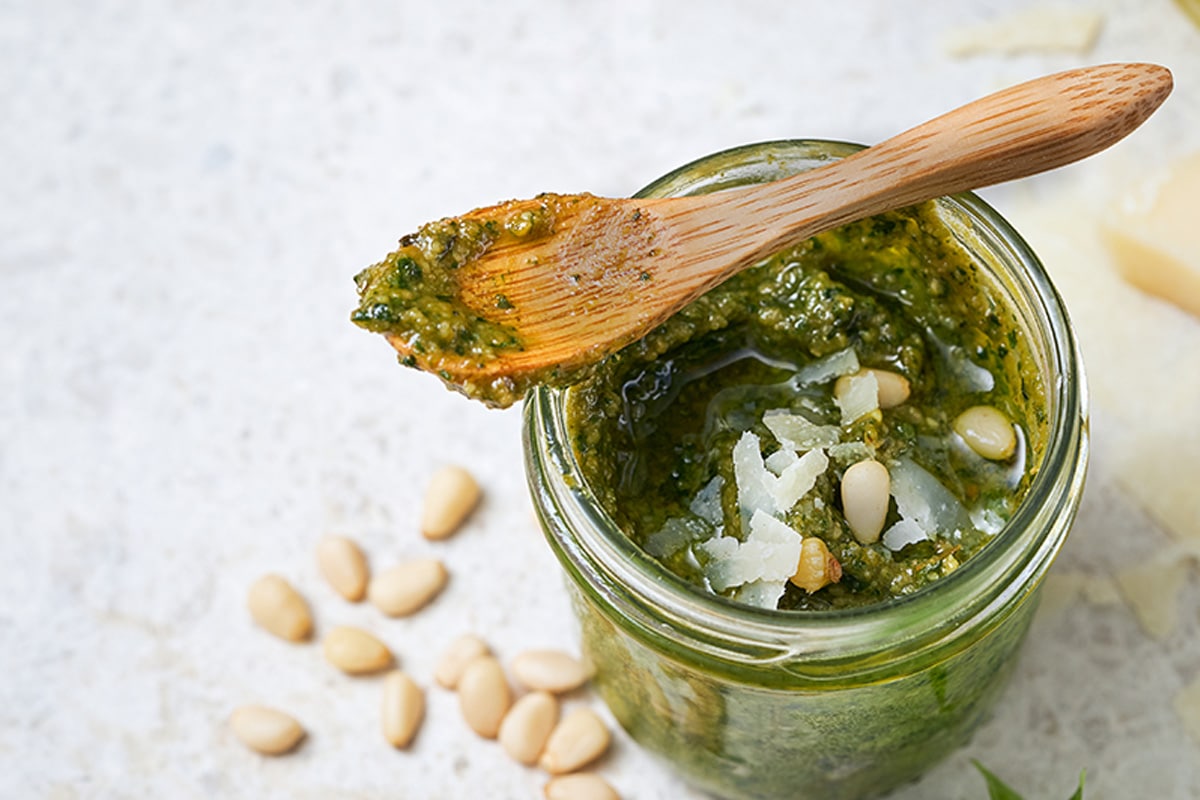
Now, you give the recipe a try! Once completed, let me know what you think. Let me remind you that raw and toasted pine nuts are used for this recipe. The difference between the two is insignificant. In the end, I was delighted because I'm prone to burning nuts when roasting them.
I could make my recipe much more quickly by using raw pine nuts. Having a good Parmesan cheese is crucial, which is essential in preparing a tasty pesto without bitterness.
Additional factors that make Pesto bitter
While overprocessing the extra virgin olive oil contributes to bitter-tasting Pesto, it is not the only factor.
You might have a bitter pesto because of the following reasons:
#1 Choosing Olive Oil
Contrary to popular belief, olive oil can have a slightly bitter taste even if it is of the finest quality. That applies especially to extra virgin olive oil. The bitterness may be too much for you; you might consider incorporating another brand. Try a tiny drop of oil on a spoon first when you're ready to make your Pesto.
#2 Pine Nut Alternatives
You can choose cheaper alternatives to pine nuts, such as almonds. Pine nuts are known for their subtle flavor, so they are the go-to ingredient in Pesto; however, they may be more expensive.
In contrast, almonds generally have a bitter, more pronounced taste. Try to steer clear of these alternatives and just go with the pine nuts. What you spend – extra – will make up for itself in flavor.
#3 Older pine nuts
When pine nuts reach their expiration date, the oils will deteriorate. Over time, the fats in the nuts will gradually turn rancid. You may find them more bitter if you attempt to integrate them into the recipe.
Fresh ingredients are always best for optimal flavoring. Therefore, if they are crushed and added to pesto recipes, those rancid oils will run rampant and cause the Pesto to taste bitter. If the bag of pine nuts is open, do not put it back on the shelf. If you can, store them airtight.
#4 Bolted Basil
The problem is always with old basil for me. One issue with the leaves is that the bitter taste is often missing upon tasting them. As soon as you put all the ingredients together, the bitterness is evident. Only use young, tender leaves. The plant will taste bitter if it is about to bolt (go to seed).
Bolting explained:
Are you wondering what bolting is? Bolting refers to the process that basil undergoes. During this time, the basil goes to seed and flowers. If you grow your own herbs, simply avoid using bolted basil. The flavor will have deteriorated and has acquired a bitter taste that may ruin your Pesto.
#5 Garlic
Garlic is the opposite of basil. It has a bitter flavor when it is fresh, and it has dense and tightly packed heads. The older varieties have softer and pliable heads. Yellow cloves are another indication that it is past their prime. If you add this less-than-fresh type of garlic, you will find that it does not turn the Pesto bitter.
How to fix bitter pesto
Let's say that you have finished your Pesto and – despite your best efforts – it has come out bitter. Do not fret. There is hope! You still have a few options. Take the time to read through this list and implement any solutions that apply to your situation:
#1 Lemon Juice
You can balance the bitterness of Pesto with the addition of lemon juice. A little-known fact in the culinary world – if you add a little bit of acid to your dish, it will aid in balancing any bitter flavor. Adding a squeeze of lemon juice is the easiest way to accomplish this.
Taste as you go and adjust the amount of acid as necessary. In addition, you must use the Pesto right away since the acid may discolor the final product.
#2 Be bold with the cheese.
How about adding cheese to neutralize the bitter flavor of Pesto?
Incorporate bolder flavors to overcome the bitterness. Using enough of them should be able to counteract the bitterness.
It is true! Stir in ¼ teaspoon of a minced garlic clove along with finely grated Romano cheese. Combine the mixture gently, then taste it. If the bitter taste persists, continue to add cheese until the bitter taste disappears.
Is it still bitter?
#3 Add Salt
You can balance pesto flavors with small pinches of salt. It's always possible to add a little extra salt, but you can't remove it once added. Whenever you add anything, stir it in slowly and taste it until the flavor is right.
#4 Create additional batches and mix
Do not be discouraged yet if the batch has gone wrong. However, you could make a side batch using the strategies outlined in this guide by following the above tips. In contrast to the bitter taste of the previous set, this new batch can be refreshing. Mix the mini-batch with the original bunch.
#5 Add extra nuts
If you aren't too keen on adding a lot of cheese to your Pesto, mix in an additional ¼ cup of pine nuts that have been coarsely chopped in the food processor. Mix that into the pesto mixture.
#6 Take the manual route.
If you have yet to create the Pesto, you can take the manual route – particularly the basil leaves and the nuts. That way, bitterness is not released from the elements due to the power of the food processor.
If possible, grind the ingredients with a pestle and mortar to better control the extent of the processing.
If possible, grind the ingredients with a pestle and mortar to better control the extent of the processing.
Common pesto mistakes you should avoid
With all of this information and the possibility of a bitter-tasting pesto, it can be easy to get a little anxious creating the dish. To avoid any complications, please follow the tips below:
Rather than frantically looking for ways to salvage your bitter Pesto, keep from repeating the same mistakes. Here are some mistakes you should be careful not to make when preparing Pesto:
- Over Blending – If your ingredients become overworked, they release the bitter oils. If using a food processor, be sure to avoid overprocessing. Pressing "on button" and blitzing it further releases more bitter oils into the Pesto.
- Incorporating Oils – As stated earlier in this guide, olive oil could be the culprit of bitter-tasting Pesto. If you plan to add more oil, it would be wise to taste it first to determine if that is contributing to the strange taste. Avoid adding more if it is not necessary.
- Adding Sugar – Finally, do not attempt to use sugar to sweeten up the flavor to override the bitterness. It will not work. Instead, add an acidic-based product to help offset the bitterness. Instead, you will immediately feel sweet and then bitter. It will just be off.
What goes well with Pesto?
Pesto is the optimal dish for either pizza or pasta. It makes an excellent sandwich spread when combined with mayonnaise. You may add it to your favorite chicken salad recipe with finely chopped tomatoes, a tad of lemon juice, and a few chopped almonds. Additionally, you may combine it with Caprese salad for a great-tasting dish!
How to store Pesto sauce
If stored in an airtight container and placed in the fridge, Pesto will last for a week. If the week is nearing a close, you may freeze the remaining product to enjoy at a later time. Don't forget to cover it tightly with a lid, or wrap it in plastic wrap, to keep the air out.
How long does homemade Pesto last?
In the fridge, Pesto stays fresh for about a week. For the remaining leftovers from this meal, we recommend freezing them so you can reuse them at a later date.
Regarding the Pesto you buy at the supermarket, the label will state the expiration date more often than not. Sauces that remain unopened are likely to stay good up to seven days beyond that date.
Can Pesto be frozen?
Pesto freezes beautifully. Pop it into an ice cube tray and place it in the freezer. After it freezes, remove the cubes and put them in bags. Keeping Pesto frozen this way can keep it for six months. It is possible to keep Pesto in the freezer for up to a year, but you must store it in an airtight container suitable for freezing.
How do I thaw frozen Pesto?
Thawing pesto is easy. Place it out on the counter for 30 minutes, which should do the trick. If necessary, microwave in small increments of ten seconds until the product has thawed completely.
Full Recipe
Homemade Pesto recipe (Bitterness solved)
Pin RecipeEquipments:
- mezzaluna knife
- small glass jar
Ingredients:
- 2 cups young basil leaves
- ½ cup pine nuts
- ½ cup finely grated Parmesan cheese (Parmigiano Reggiano – is best)
- 2 cloves garlic peeled
- 2 tablespoon canola or avocado oil
- salt and ground pepper to taste
- ⅓ cup olive oil (plus 1 tablespoon extra drizzled on top)
Instructions:
Using the traditional method [this is optional]:
- Chop the basil, pine nuts, and garlic using a sharp chopper knife like the Mezzaluna (please read notes #2). Preparing the herbs usually takes about 15 to 20 minutes.
- After chopping the ingredients, transfer them to a bowl and gradually add the olive oil (1 tablespoon at a time), sprinkle with some salt and pepper to taste.
- Combine the ingredients gently until they are well blended. And finally, add the finely grated cheese and fold it in thoroughly. Give it a taste.
- If you decide to go the traditional route, this is the last step. You need to spoon the Pesto into a glass jar and refrigerate. Drizzle another tablespoon of oil on top. Once refrigerated, Pesto lasts for 7 days.
Another Option: Chop and blend
- Chopper-knife in hand like mezzaluna is perfect for this job, and roughly chop the basil, garlic, and nut ingredients. You will only need the food processor to mix it all. Simple as that! Be gentle, and don’t overwork it.
- After roughly chopping the ingredients, transfer them to the food processor. Sprinkle a little salt & pepper over the top. Add 2 tablespoon of canola oil or avocado oil to the processor. Leave out the cheese for now.
- Use the pulse setting to chop all the ingredients in the food processor finely. The goal is to avoid the paste consistency; instead, pulse until the mixture is chunky bits. Be careful not to overprocess the components.
- When pulsing continues, periodically turn the mixer off, open the lid, and push down the larger-sized basil leaves and any loose nuts that adhere to the sides with a spatula.
- Scrape it into a bowl when it reaches the right consistency. Next, drizzle the extra virgin olive oil of your choice, just one tablespoon at a time. Stir it gently, and ensure the oil is distributed evenly. Keep adding oil gradually until you reach the desired consistency.
- The cheese is next. Using a box grater, use the fine edge or a Microplane, then grate the cheese and gently stir the finely grated cheese together by hand. The Romano cheese will soak up some of the excess oil released. You’ll have a runny result, but it’s fine as long as the cheese fixes the bitterness.By adding finely grated cheese, you add a rich, savory note to the Pesto and allow it to retain its flavors. It also helps keep the dish fresh. Best of all, it helps to offset that bitter taste successfully.
- Once you have mixed the ingredients to a satisfactory consistency, take a small taste. If it is a good flavor, spoon the product into a small container (the smaller the container, the better it will be), which means less open air space above the Pesto.
- Top with an additional tablespoon of olive oil, then seal the container. In this way, the flavor becomes more intense over time.
Notes:
Notes:
- Pesto is easiest to make when using a food processor. However, this does not mean you should simply dump everything in and mix everything. As a result, this approach yields oily paste-like concrete.
- Chopper-knife in hand like mezzaluna is perfect for this job, and roughly chop the basil, garlic, and nut ingredients. You will only need the food processor to mix it all. Simple as that! Be gentle, and don’t overwork it.
Please note that all nutrition information are just estimates. Values will vary among brands, so we encourage you to calculate these on your own for most accurate results.


